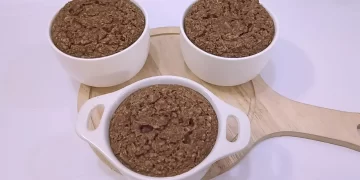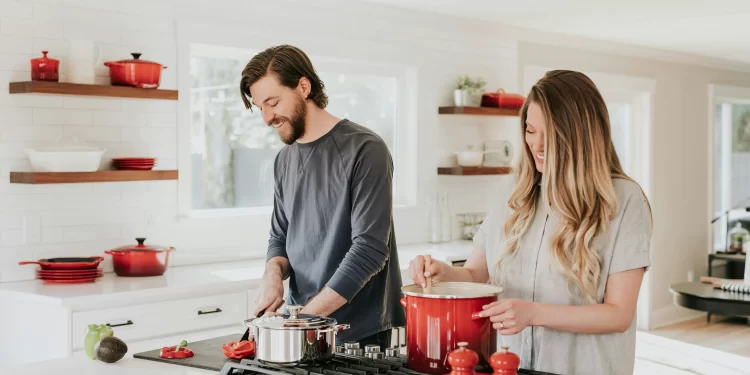Have you ever been elbow-deep in cookie dough, visions of warm, gooey goodness dancing in your head, only to realize you just sliced your finger on the mixer attachment? Or maybe you’ve wrestled with a stubborn jar lid, ending in a near-meltdown (of both the lid and your patience) and a bruised wrist. We’ve all been there, victims of the “kitchen chaos.” But fear not, fellow foodies! Kitchen safety doesn’t have to be a mystery. With a few essential tips, your culinary adventures can be a joyful and safe experience for everyone.
Think about it: a safe kitchen is a happy kitchen. It’s where you whip up delicious meals for yourself and loved ones, experiment with new recipes, and create lasting memories. But accidents can quickly turn this happy place into a disaster zone. According to the National Safety Council (NSC), an estimated 480,000 people visit emergency rooms annually due to unintentional burn injuries sustained at home, with a significant portion likely occurring in the kitchen.
Here’s the good news: these injuries are largely preventable. By following some basic safety practices, you can dramatically reduce the risk of cuts, burns, slips, and other kitchen mishaps. Imagine confidently chopping vegetables, effortlessly maneuvering hot pans, and creating culinary masterpieces – all without a trip to the ER!
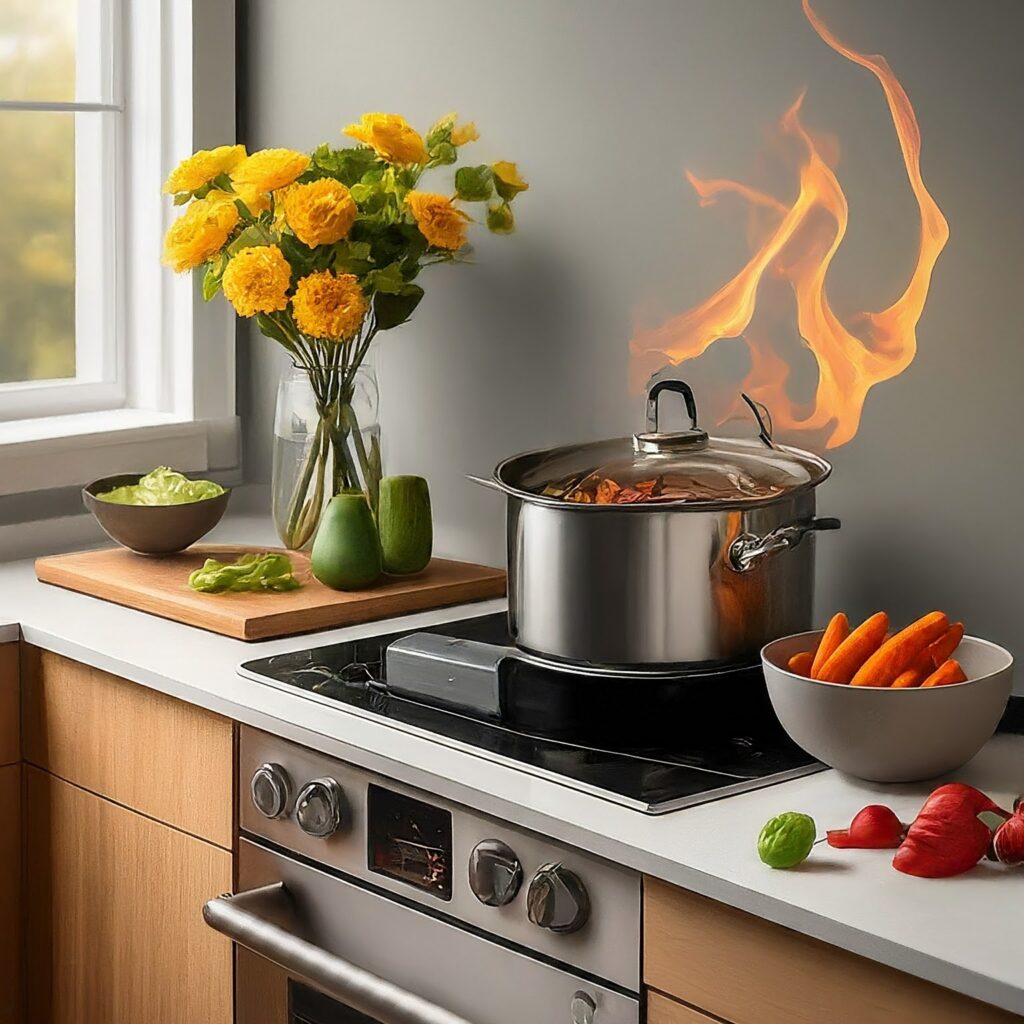
Let’s dive into the world of kitchen safety with some essential tips that will transform your cooking experience!
Table of Contents
Unmasking the Villains: Common Kitchen Hazards
Our kitchens are full of potential hazards, but knowledge is power! Here are some common culprits that can cause trouble:
- Sharp Objects: Those knives gleaming on your counter are essential tools, but they also demand respect. Improper handling can lead to nasty cuts.
- Hot Surfaces: Stovetops, ovens, and even pot handles can get scorching hot, causing painful burns if touched accidentally.
- Slippery Floors: Spilled liquids, grease, or even dropped food can turn your kitchen floor into a skating rink, leading to slips and falls.
- Electrical Hazards: Faulty appliances, overloaded outlets, or water near electrical cords can pose serious safety risks.
- Foodborne Illness: Improper handling of food can lead to the growth of harmful bacteria, causing food-borne illness.
Becoming a Kitchen Superhero: Essential kitchen Safety Tips
Now that you’re aware of the potential pitfalls, let’s equip you with the knowledge to conquer them! Here are some essential kitchen safety tips to remember:
- Handwashing is King (and Queen)! Before and after handling food, wash your hands thoroughly with warm water and soap for at least 20 seconds. It’s a simple yet powerful way to prevent the spread of bacteria.
- Become a Knife Ninja: Learn proper knife handling techniques – grip, cutting methods, and safe storage. A sharp knife is a safe knife, so invest in a good sharpener. Dull knives require more force, increasing the risk of slipping.
- Respect the Fire: Always keep flammable materials away from the stovetop. When using the oven, use oven mitts and turn the pot handles inward to avoid accidental bumps. Consider using a stovetop guard to prevent spills and splatters from reaching the burner.
- Electricity Needs Respect: Don’t overload outlets, unplug appliances when not in use, and never use them with wet hands. Regularly inspect cords for fraying or damage.
- Keep it Dry: Clean up spills immediately to prevent slips. Consider using non-slip mats for added safety, especially in high-traffic areas.
- Childproof Your Kitchen: Keep dangerous items like knives and cleaning supplies out of reach of little ones. Invest in cabinet locks and drawer organizers to secure hazardous items.
- Beware of Cross-Contamination: Use separate cutting boards for raw meat, poultry, and seafood to prevent the spread of bacteria. Wash your hands and utensils thoroughly after handling raw ingredients.
- Thaw Food Safely: Never thaw food at room temperature. Thaw frozen food in the refrigerator, cold water bath, or microwave using the defrost setting.
- Cook Food to Proper Temperature: Use a food thermometer to ensure food reaches the safe internal temperature recommended for each type of food. This kills harmful bacteria that can cause foodborne illness.
- Store Leftovers Properly: Cool leftover food quickly and store it in airtight containers in the refrigerator within two hours of cooking. Reheat leftovers to an internal temperature of 165°F (74°C).
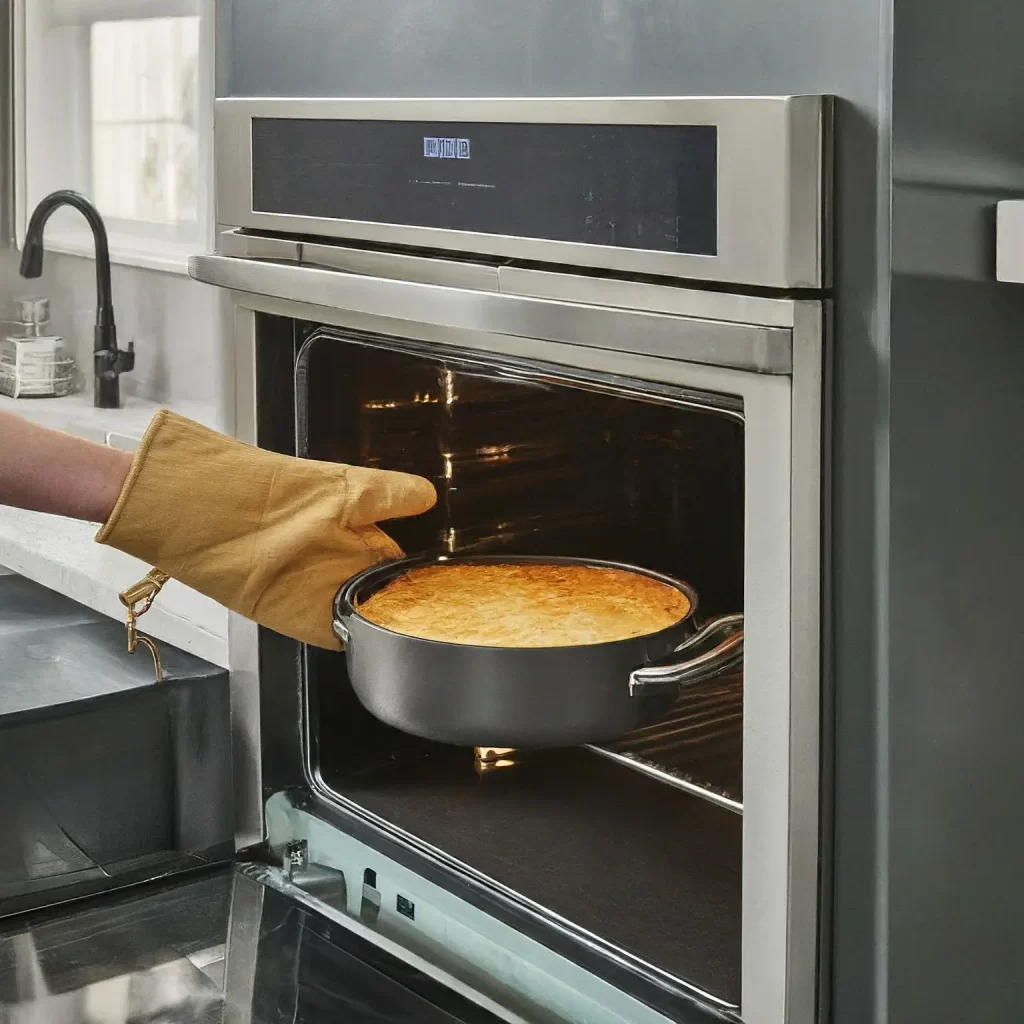
Gearing Up for Battle: Safety Equipment and Tools
- Oven Mitts: These are essential for protecting your hands from burns. Invest in a pair that is heat-resistant (at least 450°F) and comfortable. Consider silicone mitts for added grip and dexterity.
- Cutting Boards: Use a sturdy cutting board made of wood, plastic, or bamboo. Avoid using glass cutting boards as they can dull knives and shatter. Have separate cutting boards for raw meat, poultry, and produce to prevent cross-contamination.
- Safety Glasses: Consider using safety glasses when chopping or working with hot liquids to protect your eyes from splashes or flying food particles.
- Fire Extinguisher: Keep a properly charged fire extinguisher readily accessible in your kitchen, but away from the stovetop. Familiarize yourself with how to use it in case of a fire.
- Smoke Detector: Install smoke detectors in your kitchen and throughout your home. Test them regularly to ensure they are functioning properly.
- First-Aid Kit: Keep a well-stocked first-aid kit in your kitchen to treat minor cuts, scrapes, and burns.
Training for Emergencies: First Aid and Emergency Preparedness
Even with the best precautions, accidents can happen. Here’s what you need to know:
- Basic First Aid: Learn basic first-aid procedures for cuts, burns, and other common kitchen injuries. This might include knowing how to stop bleeding, apply pressure dressings, and treat minor burns. Consider taking a first-aid course for more comprehensive training.
- Emergency Plan: Have a plan in case of a fire or other emergency. Discuss the plan with everyone in your household and practice it regularly. Know where your fire extinguisher and exits are located.
- In Case of Fire: If a fire breaks out in your kitchen, evacuate the house immediately and call 911. Never try to fight a fire you can’t extinguish easily.
- In Case of a Burn: For minor burns, cool the area with running cool water for 10-15 minutes. Avoid using ice, butter, or ointments. Cover the burn with a sterile bandage. For serious burns, seek immediate medical attention.
- In Case of a Cut incident: Apply pressure to the wound with a clean cloth to stop the bleeding. Once the bleeding stops, clean the wound with soap and water and apply a bandage. If the cut is deep or won’t stop bleeding, seek medical attention immediately.
Mastering Different Techniques: Safety for Specific Cooking Methods
Different cooking methods require different safety considerations:
- Stovetop Safety: Use the right-sized burner for your pot and always turn the pot handles inward to avoid accidental bumps. Never leave pots or pans unattended while cooking on the stovetop.
- Oven Safety: Always preheat your oven before placing food inside. Never leave the oven unattended while preheating or cooking. Use oven mitts when removing hot dishes from the oven.
- Microwave Safety: Only use microwave-safe containers in the microwave. Follow the manufacturer’s instructions for cooking times and wattage settings. Avoid using metal containers in the microwave as they can cause sparks and fires.
- Deep Frying Safety: Use a deep fryer with a thermostat to regulate oil temperature. Never leave hot oil unattended. Keep a lid nearby to smother any potential fires.
Fortifying Your Kitchen: Creating a Safe Kitchen Environment
A well-organized kitchen is a safer kitchen:
- Declutter Your Counters: Keep walkways clear and avoid storing things on top of the stove or oven. Clutter can increase the risk of accidents and make it difficult to move around freely.
- Light it Up: Good lighting helps you see potential hazards like spills or sharp objects more easily. Install bright overhead lighting and task lighting under cabinets for improved visibility.
- Ventilation is Vital: Proper ventilation helps remove smoke, heat, and cooking odors, keeping your kitchen comfortable and safe. Use your kitchen exhaust fan while cooking and open windows to allow fresh air circulation.
- Maintain Your Appliances: Regularly inspect and maintain your kitchen appliances to ensure they are functioning properly. Replace worn-out cords and have faulty appliances repaired by a qualified professional.
- Keep It Clean: Wipe down spills and clean up messes promptly to prevent the growth of bacteria and to maintain a safe cooking environment.
- Beware of Pets: Curious pets can be a hazard in the kitchen. Keep them out from underfoot while you’re cooking to prevent them from getting burned or injured.
Spreading the Knowledge: Educating Family Members
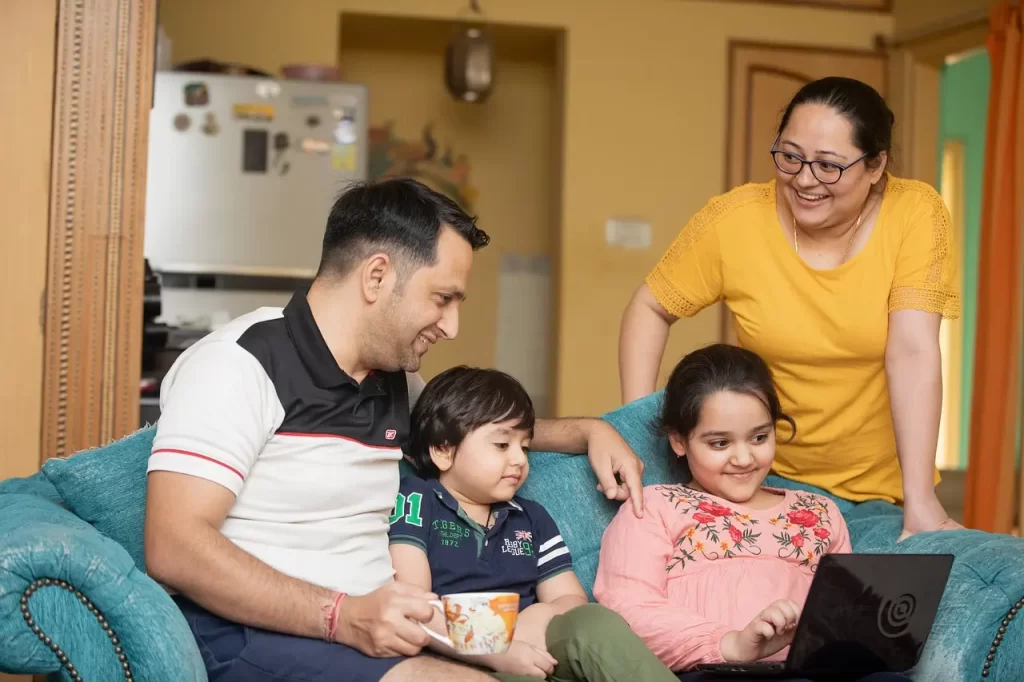
- Involve children in age-appropriate tasks while teaching them basic safety rules. For younger children, this might involve setting the table or washing fruits and vegetables under supervision. As they get older, you can gradually introduce them to more complex tasks like using a vegetable peeler or measuring ingredients.
- Open Communication is Key: Talk to everyone who uses the kitchen about safety procedures and expectations. This includes housemates, guests, and older children. Discuss the importance of following safety rules and encourage them to ask questions if they are unsure about anything.
- Lead by Example: Children learn best by observing adults. Be a role model for safe kitchen practices. Always follow the safety tips you teach them and avoid taking shortcuts.
- Make it Fun! Learning about kitchen safety doesn’t have to be boring. Use age-appropriate games, activities, and books to make safety education engaging and enjoyable for children.
The Final Course: A Safe and Happy Kitchen Awaits!
By incorporating these essential safety tips into your routine, you can transform your kitchen into a haven for culinary creativity and delicious adventures. Remember, a safe kitchen is a happy kitchen! So, put on your metaphorical chef’s hat (and maybe some oven mitts!), embrace these safety practices, and get ready to cook up some magic!
Do you have any kitchen safety tips or questions? Share them in the comments below, and let’s keep the conversation about kitchen safety going!
FAQs
How can I clean and sanitize my cutting boards to prevent cross-contamination
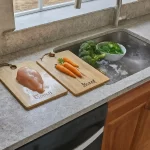
It’s important to have separate cutting boards for raw meat, poultry, and produce to prevent the spread of bacteria. After each use, wash your cutting boards with hot, soapy water. You can then sanitize them by soaking them in a solution of 1 tablespoon of unscented chlorine bleach to 1 gallon of water for 15 minutes. Rinse thoroughly and air dry completely before storing.
What’s the safest way to thaw frozen food?
Never thaw food at room temperature. This allows bacteria to multiply rapidly. Here are the safest methods for thawing frozen food:
Refrigerator Thawing: This is the safest method for most foods. Place the frozen food in the refrigerator on a plate to catch any drips. Allow sufficient time for thawing, depending on the size and type of food.
Cold Water Bath: Place the frozen food in a leak-proof bag and submerge it in cold tap water. Change the water every 30 minutes to ensure it stays cold. This method is faster than refrigerator thawing but should only be used for specific foods and requires constant attention.
Microwave Thawing: Use the defrost setting on your microwave only if the food package specifically instructs you to do so. This method can be uneven and cause some parts of the food to start cooking while others remain frozen. It’s important to cook the food immediately after thawing in the microwave.
My oven mitts are starting to show wear and tear. How often should I replace them?
Replace your oven mitts whenever they show signs of wear and tear, such as fraying, burns, or melting. It’s important to ensure your oven mitts are heat-resistant and provide adequate protection for your hands. Consider investing in a good quality pair of oven mitts that can withstand high temperatures.
What should I do if I accidentally cut myself while cooking?
If you cut yourself while cooking, the first step is to stop the bleeding. Apply gentle pressure to the wound with a clean cloth or paper towel. Once the bleeding stops, clean the wound with soap and water and apply a bandage. If the cut is deep or won’t stop bleeding, seek medical attention immediately.
How can I keep my pets safe in the kitchen?
Curious pets can be a hazard in the kitchen. Here are some tips to keep them safe:
Keep them out from underfoot: Confine your pet to a different room while you’re cooking or use a baby gate to restrict their access to the kitchen area.
Store food and cleaning supplies out of reach: Keep food, cleaning products, and other potential hazards on high shelves or in cabinets with childproof locks.
Be mindful of hot surfaces: Don’t leave hot pots, pans, or oven doors unattended. Pets can easily get burned by bumping into them.
What are some tips for teaching children kitchen safety?
Involve children in age-appropriate tasks while teaching them basic safety rules. Here are some ideas:
Younger Children: Let them help with tasks like setting the table, washing fruits and vegetables under supervision, or stirring ingredients in a bowl.
Older Children: Gradually introduce them to more complex tasks like using a vegetable peeler or measuring ingredients.
Make it Fun! Use age-appropriate games, activities, and books to make safety education engaging and enjoyable.
Lead by Example: Children learn best by observing adults. Be a role model for safe kitchen practices and always follow the safety tips you teach them.


